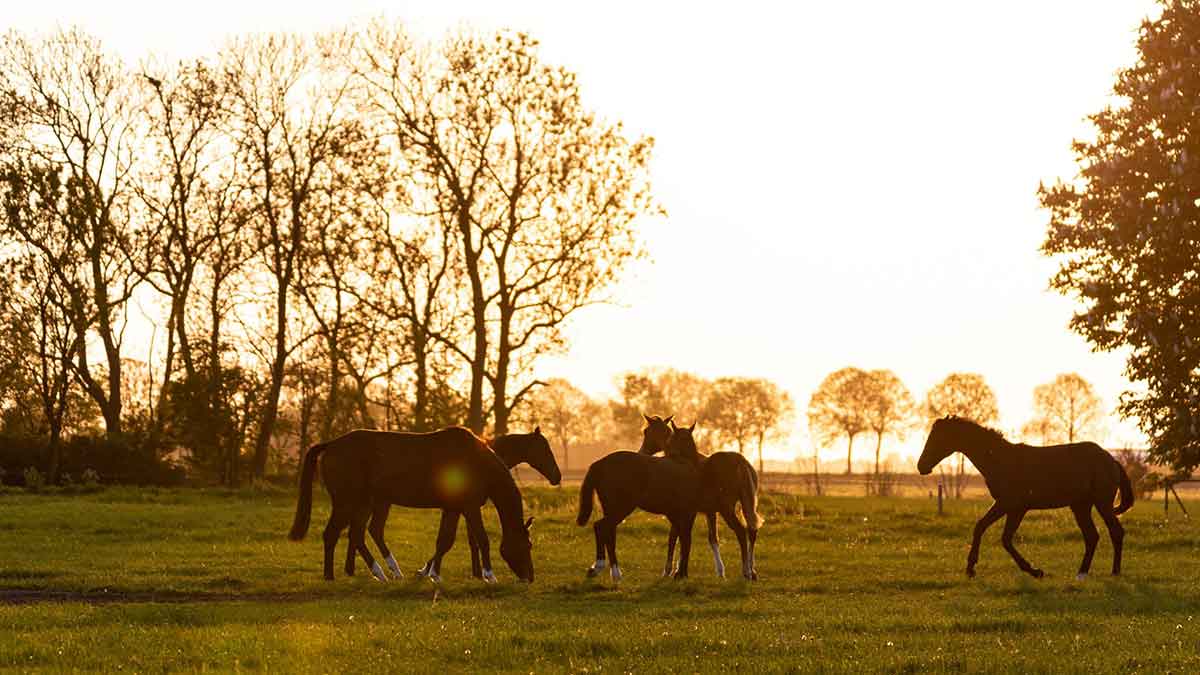If you want to keep horses or ponies, a paddock is an essential outdoor home for your equestrian friends. Paddocks can provide grazing or be used when your pastures need a rest; the following post provides some tips for building the perfect paddock.
Where To Site Your Paddock
If you haven’t yet decided where to put your paddock the points below should help you identify the right site:
High ground: Ideally you will want an area with good drainage away from boggy and wet patches, so high ground with a gentle slope is preferable.
Avoid the risk of run-off: Minimise run-off of urine or manure into streams and wetlands by ensuring your paddock does not pose a threat to water courses.
Close to your yard: To make it easy to care for your horses while they’re in the paddock it makes sense to have it close to your yard and manure heap.
Space: As a rule of thumb you require 1 acre per horse for grazing. However, if you are supplementing their grazing with feed, or using the paddock while you rest your pasture, the area should provide enough space to run and frolic – approximately 10 x 30 metres.
Soil conditions: Even if you have a well-drained site, in wet weather and with heavy traffic it can become churned up. Consider whether you may need to provide some hard standing or add a layer of gravel, wood chip or sand to improve drainage.
Choosing Fencing
Having identified the perfect spot for your new paddock you will need to fence it in. There are various options including temporary solutions such as electric fencing, and more long-term fencing choices.
If you’re creating a paddock within a field as a way of resting the pasture, electric fencing will allow you to move the paddock to a different area if you wish. Alternatively if you require a more permanent boundary, post and rail, timber or even plastic fencing are all possibilities.
Whatever you choose, the sturdiness and strength of your fencing will depend on how stable your fence posts are. A post hole digger and post knocker can make a real difference, and also make this back breaking job a lot easier.
What About A Field Shelter?
Depending on the hardiness of your horse or pony, and the position of your paddock you may need to provide a shelter. A shelter provides protection from wind, rain and cold, as well as shade and flies in the summer months. In many cases this shade can be provided by trees and hedges, but if the site is exposed you will need to provide a purpose built structure.
Maintaining The Perfect Paddock
Once you’ve built the perfect paddock you’ll want to look after it. There are several jobs you can do throughout the year to keep it in good shape. These include:
Topping: Use a topper mower to encourage regrowth and also discourage unwanted plants like thistles and nettles. Regular topping will help you turn areas that have become overgrown with thistles, docks and nettles back into grassland.
Rolling: This is a job for spring, especially if the paddock has become badly poached. Use a roller when the ground is firm enough; if it’s wet and muddy hold off on this job – otherwise you risk compacting the ground.
Harrowing: Another job for the spring gets the air circulating in the soil, removes dead grass and evens out lumps and bumps. A drag harrow or framed harrow is perfect for this.
Improve the soil: For grazing purposes there are various ways to improve the soil conditions to maximise growth. A soil analysis is essential for identifying what nutrients your soil lacks and achieving a neutral PH level.
Reseed: If you’ve reclaimed some land for a paddock or it needs some TLC after the winter months, reseeding may be necessary. This is a job for late summer providing time for the seed to germinate and gain a foothold before winter.
Remove droppings: Horses won’t feed in an area that’s been soiled, so if droppings are not removed regularly the available grazing becomes limited. Removing muck will also keep flies under control and minimise run-off.
Check fencing: To keep your horses or ponies safe fencing must be secure. Check it regularly for wear and tear, such as rotting fence posts, and also for damage caused by horses chewing or rubbing against it.
If you have any questions about creating a paddock or maintaining an existing one for our team, please get in touch. You can leave a question on our Facebook page, call 01420 520 510 or email sales@farmtechsupplies.co.uk







